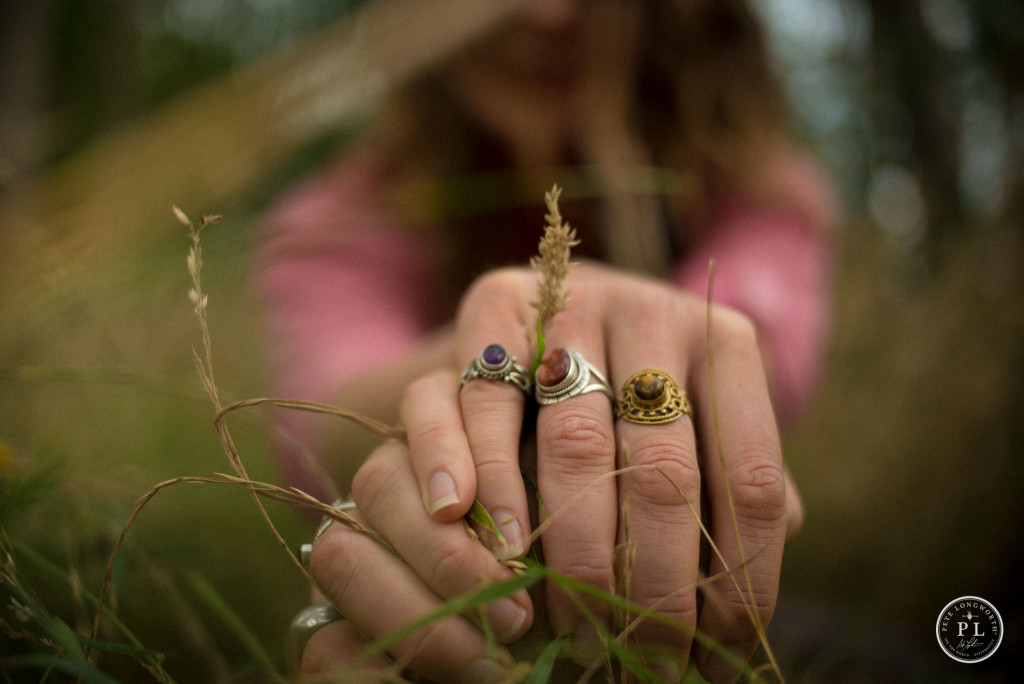by Kara-Leah Grant
Recently on social media, a yoga teacher was talking about the difficulty of fitting in going to yoga classes with her busy schedule, and admitted that her home yoga practice was poor. This teacher displayed zero awareness of the importance of a personal practice for anyone who teaches yoga.
She’s trained as a yoga teacher. Which implies that the yoga teacher training she completed didn’t hammer home the importance of a personal practice for those who teach yoga.
She’s not alone, this teacher.
And she’s not bad either.
She is a symptom of the yoga world we live in, where commitment to the practice is often negligible even among teachers, because that’s the way they’ve been taught.
Somewhere along the way we’ve forgotten that a yoga teacher is one who has a deeply committed daily personal practice, and shares that with their students.
Instead, yoga teachers have become people who have intellectually learned the alignment for a bunch of poses and have memorised some cues and sequences.
Why have we forgotten this? Because we don’t demand it anymore. We don’t demand it of ourselves when we teach, and we don’t demand it of those students that we’re teaching to become teachers.
Because, let’s face it. If yoga teacher training programmes demanded that all applicants have a minimum of one year’s dedicated personal practice behind them, they would lose 80% of all students.
That’s not economical now is it?
And given that many yoga teacher trainings are now run through studios, and studio chains, there may be a reluctance to promote self-practice because there’s a preference that students and teachers attend (paying) classes. I’m not saying that this is deliberate… it may be unconscious or subtle.
There are exceptions – like Iyengar Teacher Training. It requires that would-be-teachers:
A student wishing to train as a teacher must have been practicing Iyengar Yoga regularly for a minimum of three years before undertaking training.
…The teacher trainee would be expected to have a basic understanding of teaching practices and a solid foundation in their own personal practice…
…A training teacher is expected to maintain a home practice with regular attendance at their teacher trainers classes…
Iyengar teacher trainees do something like a mentor system with an accredited teacher trainer. The training is a clearly laid out pathway with high expectations and clear hoops to jump through.
It’s a very different model from most teacher training programmes which usually attempt to deliver a curriculum in a tight time period.
Now, within that tight time period of most teacher training programmes, imagine attempting to include a module on the importance of a personal practice. On how to structure a personal practice, how to turn up to the mat every day – no matter what – and how to work with the inevitable challenges and obstacles that arise is likely impossible.
When there’s anatomy to learn, and alignment cures, philosophy and yogic texts… it’s no wonder that the module on self-practice gets left out.
Yet self-practice is THE most important part of being a yoga teacher. Everything else comes with practice, including the anatomy, alignment and philosophy.
If you’re teaching yoga, you must have a personal practice. It’s non-fucking-negotiable. Ideally it’s daily, at minimum it’s four or five days a week.
Why? Here’s one reason why – as laid out by Rod Stryker, on the Para Yoga Facebook Page:
“Stay ahead of the game of seeking. We cannot serve others if we do not fill our own ‘seeking cup’ on a daily basis. We can’t. The line is too thin. The ice is too thin. If even a little bit of time goes by, and we ignore it…we fall through the ice.
Personal practice. Personal practice. Personal practice.
A yogi who does not do sadhana (practice) is an actor; a parrot…a bird who’s memorized some words. Your well that you draw on has to be filled…and not personal practice to the point of only giving you just enough to get by…that’s not filling your cup. It’s not about maintenance. It’s about fulfilling your seeking. That should be your primary focus.” ~ Yogarupa Rod Stryker
Beautiful words from our beloved Teacher to remind us to stay on track…with vigour…especially with the busy holiday season now in full swing. A staple of ParaYoga: Our Teacher, a true teacher, practices EVERY. SINGLE. DAY.
Any real yoga teacher knows and understands that yoga is not the sharing of information, it is a transmission of a state of being. That transmission is wholly dependent upon the state the teacher is in, which is largely dependent on their personal practice.
We practice so we can learn directly and experientially, so we can share that most direct learning with our students. This is very different from learning via another teacher, and sharing that teacher’s learnings secondhand to our students.
I remember clearly, in 2010, signing up for a Donna Farhi workshop. I was sitting in the room, waiting for her to arrive and start teaching. She walked in, surveyed the room, and sat down.
And I knew, in that moment. Finally! A yoga teacher that was deeply present. This was a real yoga teacher.
Yes, Donna has been teaching for decades. But that’s not what makes her so damn good. It’s because she’s been practicing for decades. Not going to class, but doing a personal practice.
We’ve become so fascinated with the form – the external – that we’ve forgotten yoga exists in the formless. And when it doesn’t exist there, then there’s no yoga happening.
Screeds of yoga postures on Instagram, often no yoga existing. Yoga teachers teaching classes on every corner, often with no yoga contained.
Imagine, for a moment, what would happen if every person currently teaching yoga classes began a daily personal practice.
How would that inform and transform their teaching?
How would that inform and transform their students?
What would it take to make that happen?
Here’s what we can collectively do, as the yoga community, to again promote self-practice as the cornerstone of all yoga teachers.
If you’re a yoga student attending classes, ask your yoga teacher about their self-practice. And if they don’t have one, find a yoga teacher that does.
If you’re teaching yoga, commit to daily self-practice (that doesn’t mean going to classes!). Generally, you teach what you’re practicing, but you don’t always have to. I teach mostly asana-based classes that include pranayama, chanting and visualisation. My personal practice is mostly pranayama, chanting and visualisation that includes asana.
If you’re teaching yoga and you struggle to create and maintain a home yoga practice, then find a mentor you can work with to help keep you on track. Or buy a copy of Forty Days of Yoga and use that process to work through the blocks and challenges you’re facing.
If you don’t think that self-practice is important, and you’re teaching then inquire into that. Are you rationalising? Justifying? Avoiding?
If you are running yoga teacher training programmes, make sure you include at least a two hour module on the importance of a home yoga practice. Teach students how to create a home practice, and how to maintain it. Teach them how to deal with the challenges and obstacles that arise when you practice every single day. And make sure that the person who is teaching this module has a dedicated home yoga practice which they’ve maintained for a number of years.
If you don’t think you can fit a module on the importance of self-practice into your yoga teacher training programme, inquire into that. Are you rationalising? Justifying? Avoiding?
If we all work together in this way, student, teacher & trainer, self-practice can again become the cornerstone of every yoga teacher’s practice.
I’m assuming of course that we’re all in agreement that if you’re teaching yoga you must have a self-practice.
Maybe that’s too bold an assumption.
Maybe that’s not even true.
Or maybe, it’s not yoga being taught without it.



I totally agree. I opened a studio last year and have closed it this week, as all was doing was teaching. I was unhappy. My own.practice had vanished, because I was too busy preparing.classes. now, with just a few days of not teaching, I am.practicing my own yoga and happy!
would love to discuss this but privately, if at all possible
Hey Trish,
Of course – send me a message through my contact page.
When we practice daily we turn the everyday mundane into the spiritual. The commitment to repetition brings about stillness of mind and body that provides an awareness to transforms mechanics into intuition. As a teacher I believe we hold a healing space for others, so to hold that space with authenticity we must first heal ourselves. Otherwise its just an exercise class.
It makes much sense, thanks for you insight.
I agree with the sentiment but we need to remember that many of us teach one class a week fitting that class round our day job which in my case averages 60 hours a week. I teach because I love yoga and I want to share this with other people. I will never be Donna Farhi but I have a strong regular class with a group of people who enjoy my teaching and have developed their own practice over time. I do have a daily practice but it’s usually ten minutes first thing in the morning with more extended practice at weekends. Tell me this harms my students and I will stop tomorrow. Tell me they would get a better experience from Donna Farhi and I will laugh – of course they will. #justdoingthebestican
Hey Kerry,
Many thanks for your comment. It sounds like you DO have a daily practice… right?
Good article… ruined in my opinion by the need to use the F word
What counts as a home practice? 5 minutes? What if I only have time for 2 sets of sun salutations before I go to work in the morning?
Hey Tracey,
I work on a minimum of seven minutes a day. Although if I’m teaching, it also means that on at least three to four of those days I’m getting in at least 45 minutes of practice (which can be meditation, pranayama, chanting, asana, reading texts…)
Plus self-reflection and awareness as related to the Yamas and Niyamas throughout the day is powerful too.
… then, you get up earlier…
Nice Post Kara-Leah.
I just started teaching yoga. These post is very helpful for me. I will focus these things for sure.
Regards Nandita
Yes. Just, yes.
I’m currently training to be a kundalini yoga teacher. It most definitely has been drummed into us the importance of having a home practice. Plus we have to do a 40 day kriya as part of the course requirements.
I work 50 hour weeks and juggle everything else in my life, but still fit in daily yoga – it’s just that important!
Hey Mel,
Great perspective to share, thank you for weighing in. i’m loving hearing about everyone’s different experiences.
I have this debate all the time with fellow teachers, from those too busy teaching to practice to one who refuses to teach anything he hasn’t practiced in the past two weeks (his mentor won’t teach anything he hasn’t practiced in the last 24 hours!). A lot of it, I think, comes down to one’s interpretation of what yoga is and what constitutes a home practice. Teaching can’t be your practice but so many other things can incorporate one of the many limbs of yoga – who is to say what counts?
Great comment Kim… it’s an awesome dialogue to be having. What does “count” as a home practice for a teacher? Watch out for an article on this coming soon.
Love to see that article
Here you go Caro: Home Yoga Practice: What Counts if You Are a Yoga Teacher
Such an important topic! My first YTT through a large chain of studios had zero mention of personal practice, but instead required hours of attending more classes at the studio, often times taught by teachers who didn’t have a personal practice themselves. Hope this message reaches more aspiring teachers, because the greatest gift as a student is being guided through class by someone who is truly living and breathing the practice.
It is such a huge gift to be taught by someone who has a personal practice. I adore it… so much! Many thanks for your comment – I have loved hearing everyone’s perspective.
Funnily enough, I’ve just shared with my students that my home practice has declined recently. I’d lost my ‘presence’, feeling a bit grumpy and out of sorts. I wonder why????
Today I set an intention to practice daily, so your post has been a very timely reminder to set that sanculpa. Thank you.
MY pleasure Jeannie. May your practice flow with ease.
Thanks for this article. I am often disturbed that people take up yoga then decide they want to become a teacher six months later. I think you’re right, that it comes from perceiving competence at creating an aesthetically pleasing form to be the primary goal of practice. What disturbs me even more is that a shallow practice results in teaching that is the repetition of stock phrases and erroneous ideas, that have not been tested and verified in either study or personal self-discovery. It doesn’t take long, in a regular personal practice, to realise many of the standard cues given in a yoga/asana practice are not practical, possible, or beneficial for many bodies (or any bodies sometimes!). It seems also to me that a personal practice results in more respect for the unity of breath and body, more appreciation of the journey of self-knowledge, and a hard-earned philosophy of practice – so one would actually have something to share besides physical instructions and a great playlist.
I love my home practice. Sometimes its short, sometimes long, but it always feels wonderful and I congratulate myself for the effort. Im not a teacher, I go to regular classes, but my home practice is so important to my daily self care.